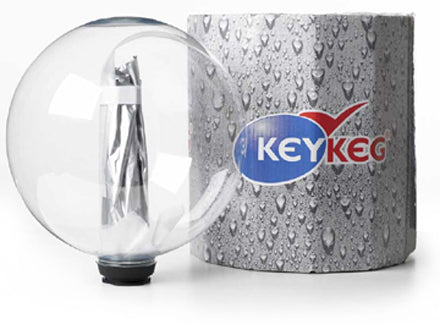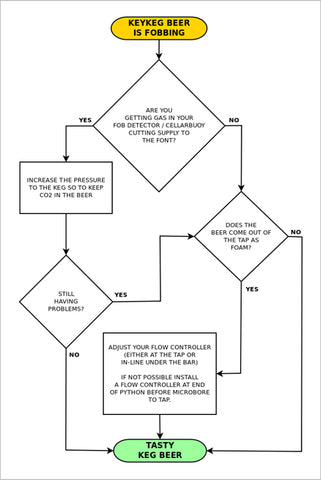KeyKegs, differences & dispense issues... - Magic Rock Brewing


What are Key-Kegs?
If you’re unfamilar with KeyKegs they are a one way disposable keg which allows small breweries a relatively easy method of kegging their beers hygienically and without the need to invest in expensive keg populations and cleaning/filling equipment. They also allow breweries of all sizes to export their keg beers without having to repatriate their kegs.
We’re supplying increasing numbers of new customers with our keg beers at the moment, and use KeyKegs for the reasons stated above, mainly their ease of use and suitability to export sales.
Most existing keg bar set ups can use KeyKegs but its worth bearing in mind a number of small differences to normal kegs both in the way they work and how to solve dispense issues.
Differences between Key-Keg and conventional Kegs
KeyKegs are essentially a sterile bag within an outer plastic sphere capable of holding pressure. When filled the inner bag expands to fill the outer plastic sphere. When served the beer leaves the bag and the space in the sphere is replaced with the serve gas. The gas never comes into contact with the beer so unlike with conventional kegs any pressurised gas including air/oxygen can be used.
One thing to bear in mind if you’re interested in stocking KeyKeg beers is that they require their own specific coupler, they won’t work with any other coupler such as Sankey or the very similar in appearance Grundy. KeyKeg connectors can be bought direct from http://www.keykegshop.eu/en/ we also usually have some available for sale from our brewery.
Secondly the keg needs to be de-gassed before it is disposed of using the red KeyKegs degassing tool which is supplied with the coupler. Never attempt to de-gas a key-keg in any other way.
Conventional kegs dispense via a spear which reaches to the bottom of the keg. Serve gas is introduced to the top of the keg, putting pressure on the top of the beer and pushing it up through the spear. In contrast to this KeyKegs have no spear to the bottom and work by introducing serve gas into the space between the bag which holds the beer and the plastic outer. As the beer is served the bag is emptying and pressure needs to be maintained on it.

Serve Issues
The main issue with regard to serve problems and KeyKegs is that the beer when dispensed is ‘fobbing’ (or coming out as foam). This gives the impression that the beer is over-carbonated. What is actually happening is usually one of two things. Firstly the flow control either inline or at the tap needs adjusting to slow down the speed of the serve. If this is not possible, flow control is relatively easy to install and a must if you are wanting to serve many smaller breweries keg products which can vary in carbonation levels.
Secondly if the fob detector in the cellar is cutting supply to the bar it means that the serve gas pressure is less than that in the beer. This means that the CO2 in the beer will ‘break out’ of the beer and into the head space of the KeyKeg. This will trip the fob detector (it thinks the keg has run out) and cut the supply to the line. The solution to this problem is to increase the serve pressure so that it is more than that in the beer.
Once this is done the fob detector may need bleeding to remove any foam that has built up in the head space of the keg. Again if its not possible for you to increase serve pressure with your current set up it may be worth changing your regulator as many newer keg beers are carbonated to different levels which can require different dispense pressure.
De-gassing Key-Kegs?
Some pubs/bars exasperated by fobbing font taps have taken to ‘de-gassing’ KeyKegs until almost flat, the above steps in most circumstances should sort out any issues relating to KeyKegs dispense. The only time when a KeyKeg would need to be de-gassed is if it has been packaged with yeast and some secondary fermentation has taken place resulting in over-carbonation. Please note that we do all we can to fully ferment our beers and package them without yeast and with specific C02 levels to suit the style and they should never need de-gassing.
The below flow chart explains in simple terms how to fix the main problems relating to key-keg serve problems, if you are still having issues serving our keg beers please contact us at the brewery 01484649823 or consult your usual cellar maintenance company.
More information at the KeyKeg website here http://www.keykeg.com/en/
